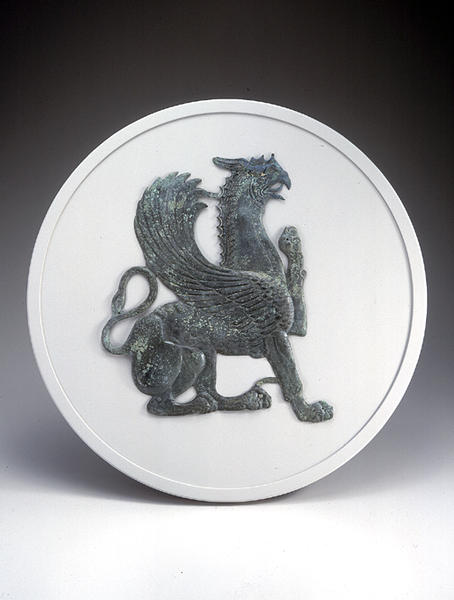Griffin-shaped Decorative Plaque
- 5th century B.C.
- Bronze
- H-42 W-34
Catalogue Entry
5th century B.C.
Bronze
H. 42.0 cm, W. 34.0 cm
The expression of Greek art in the 7th century BC, particularly in vase painting, was heavily influenced by the oriental arts which had a long tradition of plant motifs and sacred beast or fantastic beast motifs. The curved up wing tip expression seen on the Olympia-style griffin can be seen in this period. Greek vase painting gradually began to incorporate elements of the Orient's distinctive mythological subjects, beginning with their tales of heroism, and magical beasts frequently appeared in these tales. The Ketos, a sea monster, or sea horses were frequent themes, and these figures have fish-like scaled back ridges. Then along with the styles that were created by these artists, we can imagine how this griffin design began to change to include such a scaled back ridge around the 6th to 5th centuries BC. During this period the wing expression also became more flowing and extended.
This griffin-shaped decorative plaque is thought to have been used on a round shield or similar military equipment. Here the griffin has his left forefoot raised and his beak open in a threatening pose. This pose is a traditional pose that had already been seen in the 7th century BC Olympia type. But here the ears are not straight up but rather pushed diagonally back, and the protrusion that runs beneath the ears like a collar is shown in wrinkle-like form, while his back shows the scaled ridge. The musculature is expressed in extremely realist fashion, indicating the tendencies of the 5th century BC when naturalist elements were strengthened in expression, thus giving an actual animal feel to an otherwise imaginary beast.
